An atmosphere of optimism has overtaken Everest as the winds are predicted to calm, and the temperature warms. Climbers are feeling the summit in their bones for the first time this season. The schedule appears to be: fixed ropes to the summit over the next few days, first member summits around 13th May and then next week we will see summits daily on both sides. Of course, all of this assumes the jet stream has moved away which is a pretty good assumption, but still an assumption. The big day next week will be around mid week, 16/17th May.
Big Picture
It’s a mixed bag across the Himalaya and especially on Everest, some teams are still down valley on “holiday”, others are waiting in base camp and a few have moved to mid-level camps in anticipation of the ropes being fixed to the summit any day now. The Sherpa team setting the ropes are about to the Balcony on the Nepal side leaving “only” 1,535’/467m to the summit. They are hoping to get there on 12th May, Saturday, thus opening up the route for teams on Sunday the 13th. It’s a similar story on the Tibet side with the ropes well above Camp 3. Teams are sending their Sherpas up to stock the high camps, on both sides, with oxygen, fuel and tents. There were 300 Sherpas reported in the Khumbu Icefall on Friday, 11th May. High winds hit Camp 2 destroying some tents the last few days but nothing serious has been reported. Not to be forgotten, nearby Lhotse has climbers at C3 on the Lhotse Face and may summit Saturday 12 May.
Wind or No Wind?
Russell Brice probably has more trips on Everest than most any leader. He studies the weather forecast like a text book and draws his own conclusion with support from the Swiss outfit Meteoexploration. He is a bit uncomfortable at this time, especially about the windchill near the summit for his team:
My understanding of the weather forecast is that it will remain at -30 on the summit for the coming days, and that the wind will be variable between 20 – 30km for the next few days. This is outside my normal parameters for safety as the wind chill factor is rather cold. I am sure that there will be several teams pushing for the summit during this time, but the risk of frostbite is quite high, so I wish them all a safe return, with no damage. In the meanwhile our team will be patient and will wait for a calmer period and warmer temperatures in a few days time. Of course we like to think that we are understanding the weather very well…but it is always changing, and so we also need to be adaptable, and try and be in the right place at the right time.
Looking at the public forecast Meteoexploration has on their site, it predicts windy and cold over the weekend but warmer and calmer into next week supporting Russ’s comments.
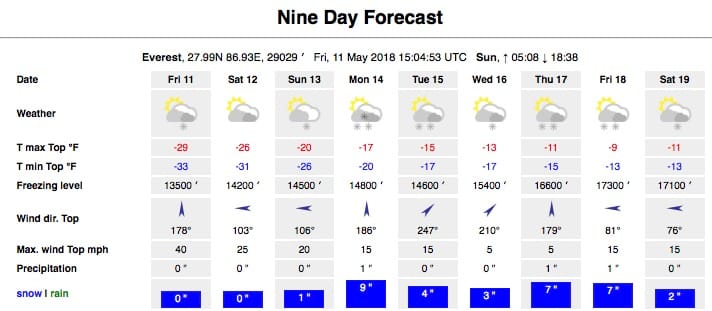
Nepal: Ropes to Balcony, Summits all Next Week
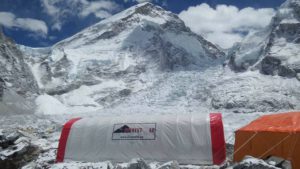 First EverestER has been busy as usual and posted these numbers. There are about 1,000 people at base camp. Remember they are all volunteer and live off donations:
First EverestER has been busy as usual and posted these numbers. There are about 1,000 people at base camp. Remember they are all volunteer and live off donations:
- 306 consults
- 265 men, 35 women
- 163 Nepali, 56 USA, 16 Canada, 16 China, 11 England
- 127 Mountaineer, 123 climbing sherpa, 23 kitchen staff, 10 trekker, 7 western guides
- 67 URTI, 51 HAC, 27 MSK, 21 gastroenteritis,
- 2 HACE, 6 HAPE, 7 AMS, 11 Frostbites.
IMG commented that right now its even cold at base camp:
“The weather this evening at EBC is mostly clear and calm and the winds are beginning to trend from the North. All of this equals lower temperatures than normal from EBC to the Summit. I know it is supposed to be cold on Mount Everest but it is COLD here tonight! Forecasted temperatures between Camp 2 and the South Col are between -21°C and -29°C for tomorrow and with a breeze coming in after lunch which can make for a cold day on the Lhotse Face.”
Jagged Globe is at Camp 2 saying they are ready for the summit push:
“There were strong winds at all altitudes during the night. This led to drifting snow in the icefall. The Jagged Globe team were the first on the move this morning and had to break trail and pull the ropes free as far as Camp 1. This slowed progress and the team took 9hrs for the trip from BC to Camp 2. The Sherpa team are carrying loads to Camp 4 today despite the continuing strong winds. Later tonight the team will decide if tomorrow will be rest day, or if they are in a position to move to Camp 3.”
Louise McEvoy makes an interesting comment about secrecy on the summit day. She is with the Nepali company, Ascent Himalaya
After lunch we all sat speculating when our summit push will start. The Sherpas like to keep it a closely guarded secret as if word got out it could start a mad rush from other teams, frustrating but understandable.
Horia Colibasanu and Peter Hámor planning to climb to Everest via the West Ridge then traverse over to Lhotse have been working hard and appear to be in good shape as the forecast improves:
“The last weeks have been pretty difficult. We’ve put an enourmous amount of work into equipping the route. We’ve fixed over 350 meters of rope to secure ourselves on the ice covered slopes, we’ve carried up a lot of gear. We are at Base Camp now and may descend to 4,500 meters, to rest while awaiting the favourable weather window. We need about 5 days of good weather to start out”
Tibet: May 17-19 Will be Huge!
7 Summits Club is ready looking at the end of next week for summits:
“Acclimatization Complete! The rest is done. Now just go upstairs! Storming the summit of Everest, our team of 7 Vertices is scheduled for 17-18-19 may by three groups. Tomorrow, the first group under my leadership is running out of the BL.”
Furtenbach has a similar schedule:
“Guys, Everest 2018 is on the go! Our classic team starts today from basecamp to ABC (advanced basecamp), where they’ll meet with our flash-group. The Chinese are still fixing the route from camp 3 to summit, as soon as they are finished our team will start their summit-push! Itinerary should be: from ABC to North Col (7.000m) – Camp 2 (7.800m) – Camp 3 at 8.300m (there are only 5 mountains higher than camp 3 at Everest!) and summit day on 17th May if everything goes according to plan. Weather forecast is good so far – almost no winds! But frrrreeeezing cold at summit night: minus 26-30°C!“
I like Dominic Renshaw’s post as he prepares to leave for his summit bid:
We have the green light! We setoff on the 13th May. So the summit push begins on the 13th May what ever happens the following 9 days are going to be an adventure like no other. Fingers crossed she will give us our chance at the summit. Logically this should mean the summit on the evening of the 18th May/morning of the 19th May. It’s an odd feeling when 10 year’s of preparation boil down to just 9 days. Personally I’ll be taking them one at a time and not thinking too much about the next day, except saving as much energy as possible each day, small steps is the key.
Boyan Petrov Missing on Shishapangma – Helicopters on site but stopped by weather
The Simrik Air helicopters are now at Nyalam in Tibet, about 12 miles/20km from Shisha. They hope to fly on Saturday 12 May. He now has been missing for eight days. The hope is he is in a tent at Camp 2 or 3. There is still hope he is alive. The Bulgarian Boyan Petrov (45), was climbing solo, without supplemental oxygen or a radio. He left base camp on 29th April but stayed behind as teammates left Camp 2 on 3 May due to poor weather. He was spotted through a telescope on 5 May but nothing since. Petrov’s wife, Radoslava Nenova, has made an appeal for donations to fund the rescue attempt on her Facebook page.
Summit Strategies
More often than not, the summit push is a herd mentality based on rumors throughout base camp of the forecast, sometimes based on false information planted by ill-intentioned teams. With 400 people on the Nepal side and 200 on the Tibet side, there is always a chance of hitting bottlenecks and slow climber that increase the risks of frostbite or worse. So what is the best option if you are a team leader? Let’s explore some ideas.
Get out Early
Once the ropes are fixed and there is a good weather forecast, teams must gamble on when to begin the first summit attempt. By going first in early to mid May, it is cold, very cold as we are seeing right now. And if the forecast misses the winds by 20%, it can be horrible. In 2012 hoarfrost coated climbers making for a miserable summit experience and once they got there, there was no view.
But this is the rub with this strategy, many teams want to be “first” so it can be crowded. There can easily be 100 to 200 climbers in that first window. And to complicate matters, it seems the least experienced and sometimes slowest teams try to go early creating a massive traffic jam. These teams refuse to step aside to let faster climbers pass thus a mass of humanity is paced by the slowest, and sometimes the least capable climber on the mountain.
There is no “governing body” to control this and calls for regulations have never been implemented. Guides will meet a few times during the season to try to coordinate and some do, but many don’t cooperate simply managing their summit push to their schedule without regard for anyone else. Ok, so you have 300 people trying to be the first to summit in cold conditions at a snail’s pace. Not to despair, there is a solution to this. Hang on.
Go Late
This scenario calls for the team to be one of the last to go after everyone else has given it a go. Dave Hahn (not on Everest this year) with 13 summits used this strategy year after year, very successfully. The advantages are that the weather is usually the warmest of the season, the boot track is kicked in and the crowds are gone. You can move fast and easily. And there is a huge “but”….
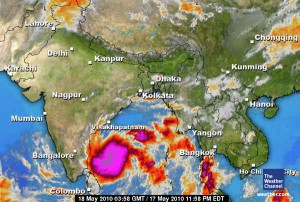
Weather forecasting on Everest has improved but all it takes is for a cyclone to develop in the Bay of Bengal bringing snow and winds to Everest, or the monsoons to start early, or the Jet Stream to move on top of the summit, or a hundred other variables and without warning, the season comes to an early halt.
Even with a forecast of an early end, all of a sudden that 4-7 day window needed to summit drops to 2-4 days and you gamble with your life. If you push during a small window, you must go fast, often foregoing that extra night at altitude to rest. You may need extra oxygen that you don’t have but most of all you must be in almost perfect health. This is not a scenario for novice, slow, inexperienced climbers. You can easily die. This is the riskiest of all my options.
Goldilocks Timing
Each year, a few lucky teams go between the early and late teams when it is not too cold and not too hot (as if it ever is on Everest!) and the winds are low. In other words, perfect conditions. Most summits have occurred between 17-22 May since 1953. But this doesn’t mean the weather was good. Let me repeat this – just because more people summit on 19 May, does not mean the weather is always good that day each year. As previously discussed, these teams chose to skip the early windows due to the crowds, but don’t want to wait too late and risk missing any window altogether. So knowing May 19th has been the sweet spot for decades, many teams arbitrarily target this date.
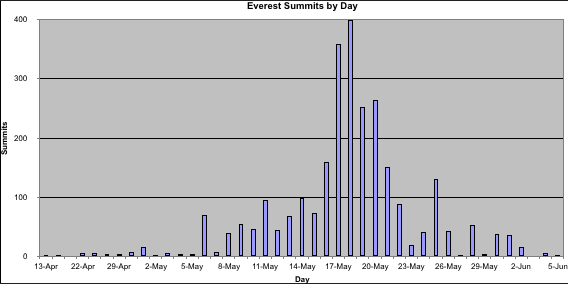
But with climate change, many of these historical patterns are not as predictive as they once were. Anyway, as I already mentioned, long time very experienced guides like Russell Brice who will pour over custom weather forecast and select a window based on their experience, advice from professional meteorologists and input from long time Everest Sherpas on mountain conditions. You will rarely see a Himex team go for the summit in bad weather, yet it occasionally happens.
Break into Small Sub Teams and Go Fast and Nimble
This is the strategy I like the best but is the hardest to achieve. You play your own game. You go when your mind and body are fully prepared. You are well rested, acclimatized and have all your camps stocked and the weather looks good. In 2018 there are teams with 50 members, plus 50 Sherpas – 100 total climbers! Some with even more. These large teams will break up into smaller teams of perhaps 20 to 40 climbers in total, still a lot of people. This is an attempt to not “clog” the route.
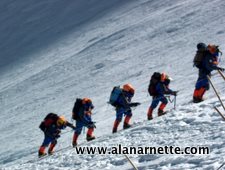 But some use a technique where they literally climb nose to butt. The theory is that they move as a single pod in unison, gathering strength from the group. This technique is fine if they were alone on the mountain, but the problem is this technique is almost always extremely slow and plodding thus create the bottlenecks we spoke of earlier.
But some use a technique where they literally climb nose to butt. The theory is that they move as a single pod in unison, gathering strength from the group. This technique is fine if they were alone on the mountain, but the problem is this technique is almost always extremely slow and plodding thus create the bottlenecks we spoke of earlier.
So the best way to deal with these clogs is to unclip from the fixed rope and pass them. Yes, you will assume the risk of slipping on ice or steep terrain and falling to your death, but you have to use common sense on where and in what conditions to make this move. The key, however, is that you must have the flexibility to breakaway from your group. If your leader insists on you being a cog in the wheel, you are stuck. So discuss this scenario with your team before you leave base camp.
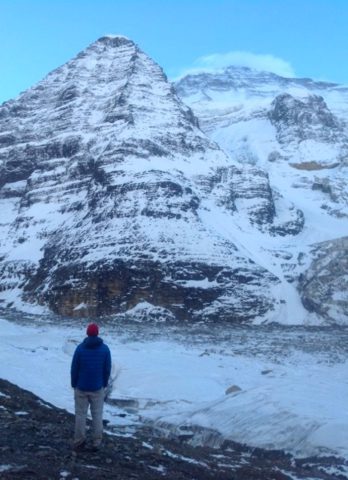
In 2011 I was with IMG and climbed with Kami Sherpa, and no western guide. Even though IMG has huge teams, they break them into sub teams. In 2011 my team became very small for a variety of reasons thus we had great flexibility. I credit the IMG leadership for their flexibility and the IMG Sherpas for their skills and experience. Kami and I made the “pass the clog” move as we left the South Col on 20 May 2011. There were 40 to 60 people almost standing in place that night on the Triangular Face about 27,000 feet, just above the South Col or Camp 4. The weather was perfect and the terrain was reasonable, not overly steep when we made our move. We passed over 50 people in one push. That single decision allowed us to be the third and fourth person to summit that day from the south side out of 150 in total. We never waited during our entire summit push up and back.
Next
Ok, double back your harness, all the prep is over and we may see summits starting on Saturday night on Everest. If the weather forecast hold, next week will be wild with summits almost every day not only on Everest but on all the other 8000ers. I leave you with this image my friend Ryan Kushner sent to me this morning from Dhaulagiri where they are battling perhaps the most difficult weather of all the 8000ers this spring. He hopes to leave for their summit push soon.
My best to all on each peak for a safe and positive experience.
Climb On!
Alan
Memories are Everything

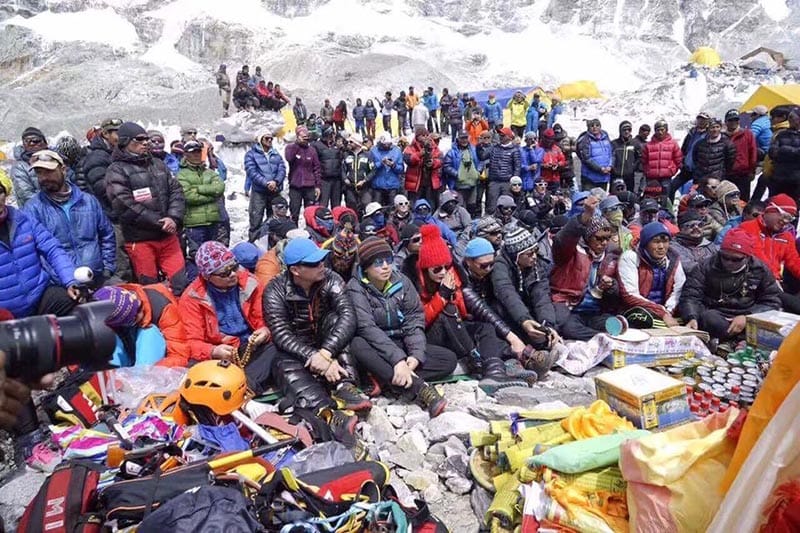


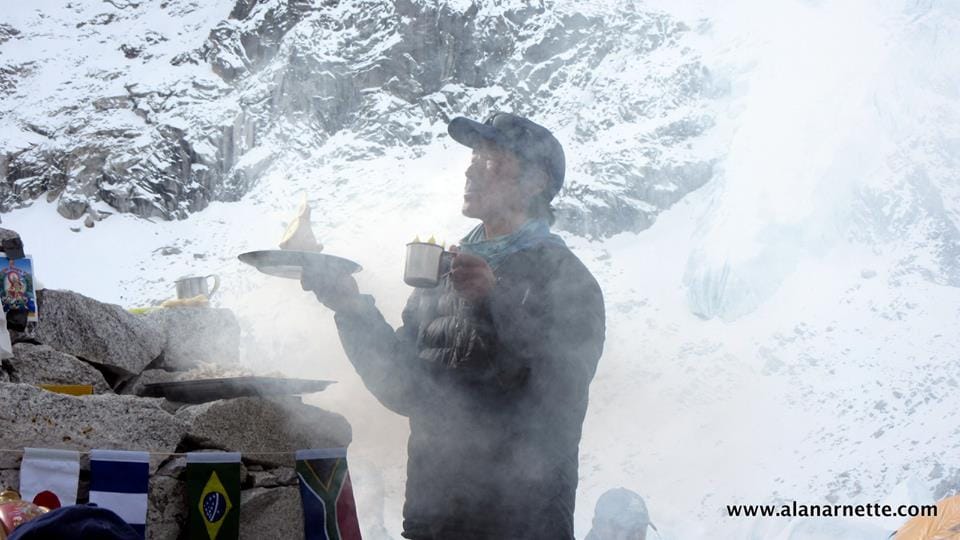
2 thoughts on “Everest 2018: Summit Strategies as Forecast Improves, Helicopter for Boyan”
Thank you for your amazing and informative articles! I wish all a safe summit and return! Hope to see photos next week .
Fingers crossed for safety, adequate skills and luck during this summit time. Thanks for the coverage, Alan!
Comments are closed.